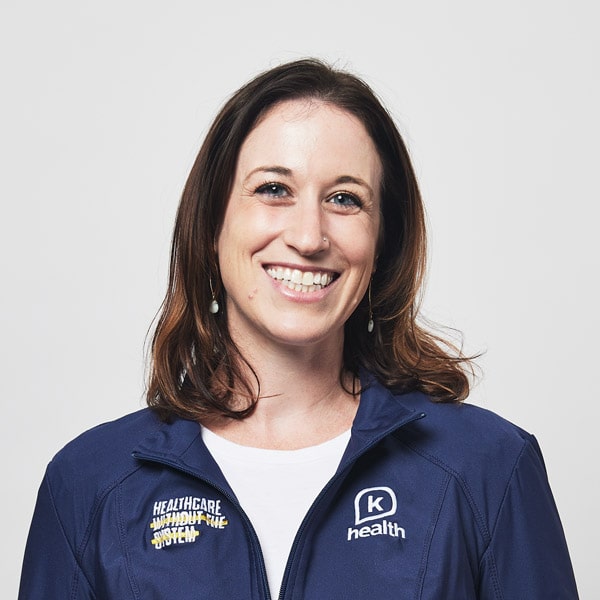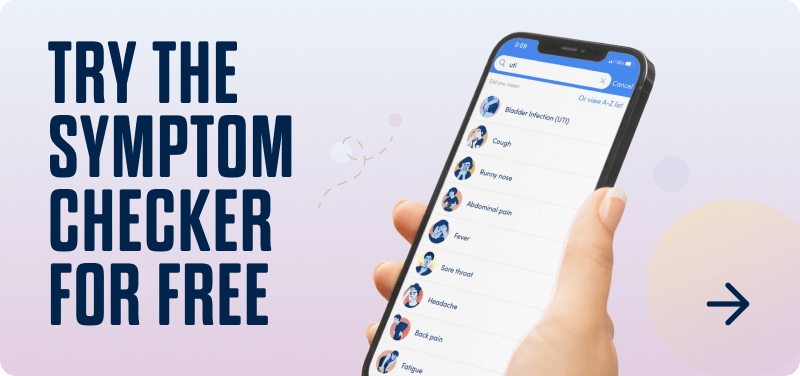Each time you have a physical, your healthcare provider measures your blood pressure.
But what are they measuring?
Blood pressure measures the force that your blood exerts on the walls of your arteries as it moves through your circulatory system.
When your heart pumps a lot of blood, or your artery walls are narrow, the pressure can go up.
If your blood pressure gets too high, you may be diagnosed with hypertension, another word for high blood pressure.
High blood pressure can damage your arteries, restrict blood flow, and put you at risk for heart attack or stroke.
If your number is too low, you have low blood pressure or hypotension.
In that case, your organs may not receive enough blood to function properly, putting you at risk of dizziness, fainting, and falls.
In extreme cases, people with sudden or very low blood pressure can develop a life-threatening condition called shock.
In addition to having your blood pressure measured when you’re at your healthcare provider’s office, you may also have it measured by an automatic machine at the pharmacy or grocery store, or at home if you’re interested in taking more control over your day-to-day health.
If you do, is there a “best” time of the day to measure your blood pressure for accurate, consistent results?
In this article, I will explain more about what blood pressure is, how it’s measured, and what different ranges of blood pressure mean.
I’ll also tell you if there’s a best time to measure your blood pressure, and when to see a doctor.
What is Blood Pressure?
As your blood flows through your body, it presses outward on the walls of your arteries.
This pressing force is blood pressure.
When your blood pressure is measured, it’s expressed in two numbers, usually as a fraction.
- Systolic pressure: The top number of the fraction, this measures the level of pressure in the arteries each time the heart squeezes, or pumps.
- Diastolic pressure: The bottom number of the fraction, this measures the level of pressure in the arteries between heartbeats.
Both of these numbers are measured in millimeters of mercury (mm Hg), and both are included in your blood pressure reading. So if your blood pressure is “120 over 80,” it would be written as 120/80 mm Hg.
Because high blood pressure doesn’t always present immediate symptoms, healthcare providers suggest monitoring your blood pressure at regular intervals so individuals know if they are at increased risk of heart disease or stroke.
Having early information gives patients the chance to lower their blood pressure through lifestyle changes and medication options before a life-threatening condition develops.
Manage your blood pressure with K Health for $29 a month, no insurance needed.
Get StartedHow to Measure Blood Pressure
No matter where you are having your blood pressure checked, there are steps you can take to get an accurate reading.
Your blood pressure changes constantly throughout your day depending on your daily activities, stress levels, hormonal shifts, exercise regime, food and fluid intake, and body position.
To ensure an accurate blood pressure reading:
- Use the restroom before your reading (a full bladder can skew your results)
- Sit in a chair in a comfortable position for three to five minutes before your reading
- Sit with your legs uncrossed and feet flat on the floor
- Rest your arm on a flat surface at heart level
- Place the arm cuff over your bare skin, not over a sleeve or other clothing
- Use the same arm to stay consistent when taking your blood pressure
- Make sure the arm cuff is snug, but not too tight
- Relax, breathe normally, and refrain from speaking until your test is over
Do not check your blood pressure over and over on the same arm without taking a 15-30 minute break between readings. If you do, you will start to get inaccurate results.
If you are taking your test at home, test at around the same time every day, and record your results in a log for your provider to see.
It is not recommended to check your blood pressure multiple times a day unless you are experiencing specific symptoms, or are instructed to check more frequently by your medical provider.
Blood Pressure Ranges
The American Heart Association recognizes five distinct blood pressure ranges: normal, elevated, hypertension stage one, hypertension stage two, and hypertensive crisis.
You can also have low blood pressure, but if you get a low reading and don’t experience adverse symptoms, there is usually nothing to worry about.
Normal
According to the Centers for Disease Control, normal blood pressure readings include a systolic (top) number between 90-120 mm Hg and a diastolic (bottom) number of 60-80 mm Hg.
If your blood pressure is in this range, continue to make healthy lifestyle choices, exercise, eat a nutritious diet, and get regular medical checkups.
Elevated
If you get a blood pressure reading with a systolic number between 120-129 mm Hg and a diastolic number between 60-80 mm Hg, you have elevated blood pressure or prehypertension.
Talk to your doctor about steps you can take to control your blood pressure.
They may suggest changing your diet to include more fruits, vegetables, and whole grains, becoming more physically active, and cutting back on salt, tobacco, and alcohol.
These simple steps may help regulate your blood pressure and avoid the negative consequences of hypertension.
Sometimes, elevated blood pressure can be a sign that there is an underlying condition impacting your health.
Talk to your doctor about screening for kidney disease, adrenal disease, thyroid conditions, sleep apnea, or adjusting any medication that might be causing your blood pressure to spike.
Hypertension stage 1
Patients with hypertension stage one have consistent blood pressure readings with either a systolic number of 130-139 mm Hg or a diastolic number of 80-89 mm Hg on multiple days.
You are at higher risk for organ damage and other potential health complications if you have hypertension stage one.
Your doctor may not only recommend a new diet and exercise regime, but may also prescribe a blood pressure medication to help control your blood pressure and reduce your risk of death.
Hypertension stage 2
Patients with hypertension stage two have blood pressure readings with a systolic measurement of 140 mm Hg or higher or a diastolic measurement of 90 mm Hg or higher.
At this stage, you run a more significant risk of developing coronary heart disease, heart attack, and heart failure, as well as stroke, aneurysms, and kidney failure.
Your healthcare provider will closely monitor your measurements and recommend significant lifestyle changes and blood pressure medicines to help lower your blood pressure and avoid any life-threatening conditions.
Hypertensive emergency
A systolic reading over 180 mm Hg or a diastolic reading higher than 120 mm Hg accompanied by symptoms is considered a medical emergency.
If you take your own blood pressure and your first reading shows exceptionally high numbers, wait five minutes and then take a second reading.
If your blood pressure is still extremely high, call your doctor or primary care provider to make an appointment and discuss if they recommend any immediate treatment.
If you have a blood pressure reading that qualifies as a hypertensive emergency and you are experiencing other symptoms including chest pain, back pain, weakness, difficulty breathing or speaking, changes in vision, numbness, or tingling, you may need immediate medical attention. Call 9-1-1 or go to the nearest hospital emergency room.
Best Time of Day to Take Blood Pressure
The “best” time to take your blood pressure is the time of day you can do so most consistently.
Checking at roughly the same time every day will allow you to see a trend over time—so that time can be the morning, afternoon, or evening, so long as it’s fairly consistent over time.
Most providers suggest checking your blood pressure two or three times a week, but they may have you check more frequently if you are experiencing specific symptoms, have had recent medication changes, or need closer monitoring.
Remember: Your number does vary quite a lot throughout the day, so if you get an unusual number for you, you may want to recheck it at a later time.
Manage your blood pressure with K Health for $29 a month, no insurance needed.
Get StartedWhen to See a Doctor
If you have concerns about your blood pressure or are experiencing symptoms that you believe might be related to hypertension or hypotension, contact your doctor or primary care provider.
If you have high blood pressure, you must remain under the care of a healthcare provider.
They can monitor your readings and recommend lifestyle changes and medications to help you regain control of your health and avoid serious health complications.
If you have high blood pressure and are experiencing chest pain, back pain, numbness, weakness, difficulty breathing, difficulty speaking, or vision changes, you may require emergency medical care. Call 9-1-1 or go to your nearest hospital immediately.
How K Health Can Help
Did you know you can get affordable primary care with the K Health app? Download K Health to check your symptoms, explore conditions and treatments, and if needed text with a provider in minutes. K Health’s AI-powered app is based on 20 years of clinical data.
Frequently Asked Questions
K Health has strict sourcing guidelines and relies on peer-reviewed studies, academic research institutions, and medical associations. We avoid using tertiary references.
-
Blood pressure measurement. (2022).
https://medlineplus.gov/ency/article/007490.htm -
How to check your blood pressure – for home. (2018).
https://www.doh.wa.gov/Portals/1/Documents/8380/345-273-BloodPressHm-en-L.pdf -
Understanding Blood Pressure Readings. (2022).
https://www.heart.org/en/health-topics/high-blood-pressure/understanding-blood-pressure-readings -
Study confirms: Controlling blood pressure is critically important in preventing heart disease and stroke. (2021).
https://www.uab.edu/news/health/item/12046-study-confirms-controlling-blood-pressure-is-critically-important-in-preventing-heart-disease-and-stroke -
High Blood Pressure Symptoms and Causes (2021).
https://www.cdc.gov/bloodpressure/about.htm

 Medically reviewed
Medically reviewed

